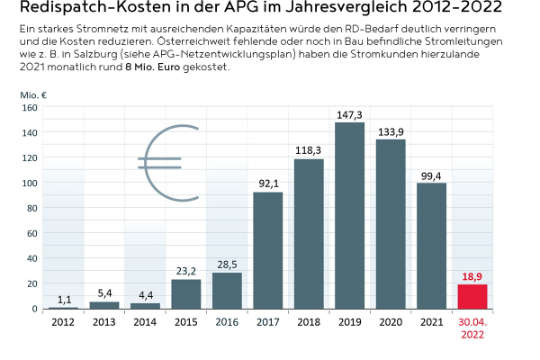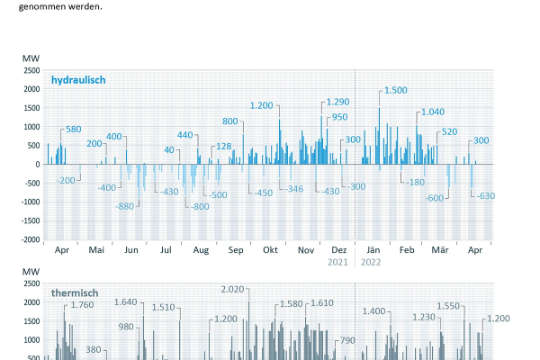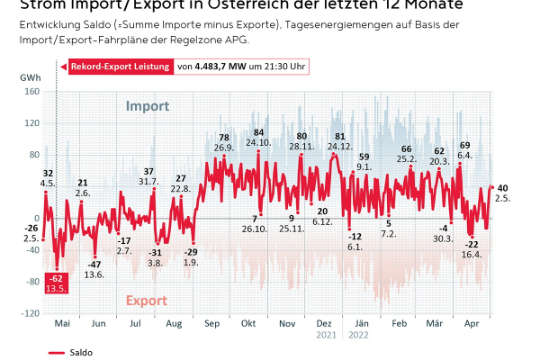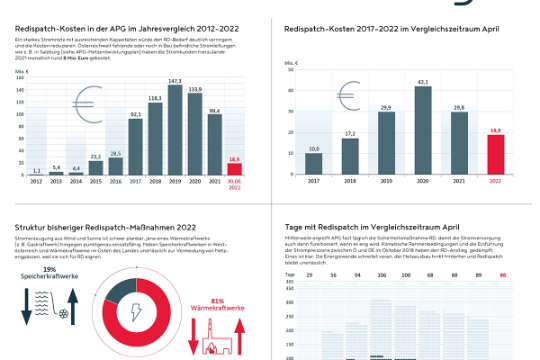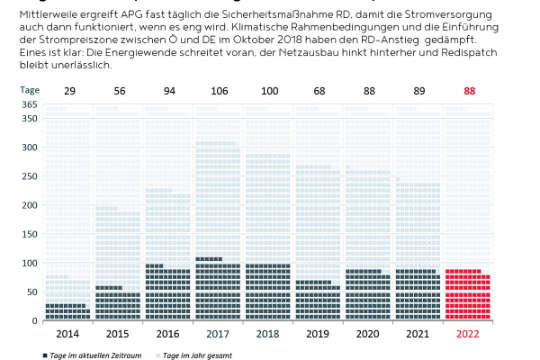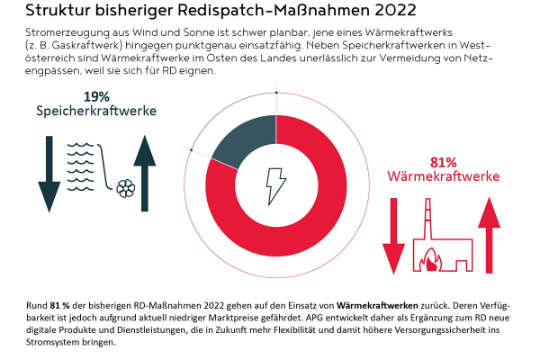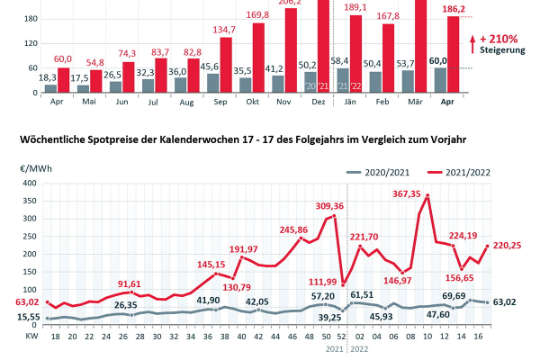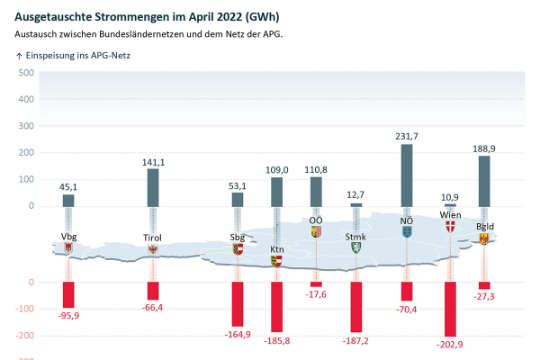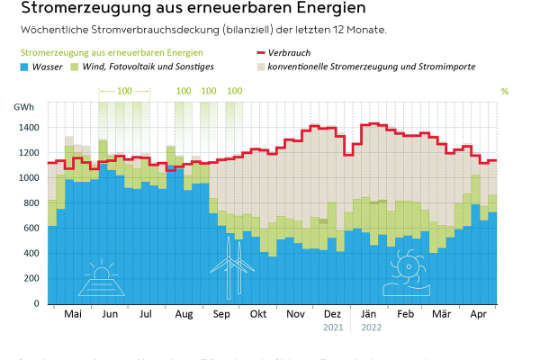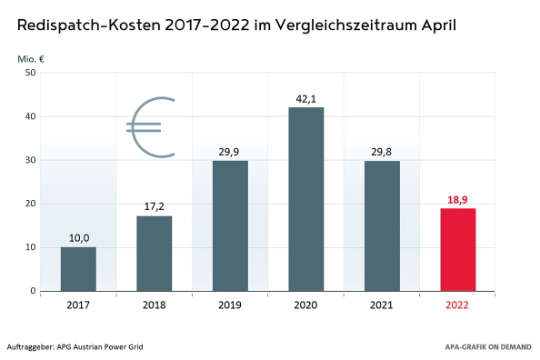Austrian Power Grid (APG): approximately 76 percent of the electricity demand covered by renewables
In April the APG fact box showed an upturn in the coverage of the electricity demand by renewables. For the first time in quite a while more electricity exports have been possible again. Interventions in the grid generate costs of approximately 19 million euros.
Compared to the previous months the electricity production from renewable energy sources has increased again in April. Approximately 76 percent of the Austrian electricity consumption could be covered by renewables.
Considering a total consumption of 4,666 GWh in calendar weeks 14 to 17, this means approximately 3,546 GWh. In calendar week 15 it was even possible to cover 87 percent of the domestic demand with sustainable electricity.
With 610 GWh the production from wind power was approximately 100 GWh less than in March (calendar weeks 9 to 13), while the run-of-river production (2,209 GWh) increased in comparison to the previous month despite the low rainfall. In March, the production was approximately 14 percent less with 1,902 GWh. Gerhard Christiner, CTO of APG, describes this as a typical seasonal development: “In springtime and in the summer when the temperatures rise, we can also recognize an increasing production output of renewable sources, in particular of hydropower facilities”.
More export days for the first time in quite a while
Even though in April electricity still had to be imported to a large extent, for the first time this year also an increasing number of export days could be observed. “Overall the imported electricity volume necessary in April was 477 GWh. Seven days, however, were export days on the balance sheet, and we are talking about 85 GWh in this context“, says Thomas Karall, APG’s CFO. In the previous month of March more than double this volume had to be purchased. In April 2021 it was no quite double the volume (928 GWh).
Energy exchange within Austria
For the security of supply in Austria it is important that the individual provinces can withdraw electricity from the APG grid but also feed surplus electricity in the trans-regional grid and thus make it available for utilization all over Austria.
With approximately 1,018 GWh the federal provinces withdrew more electricity from the APG grid than they were able to feed in (903 GWh). The three provinces with the highest withdrawal were Vienna (203 GWh), Styria (187 GWh) and Carinthia (186 GWh). The three provinces who were able to feed the largest amount of electricity in the Austria-wide APG grid were Lower Austria (232 GWh), Burgenland (189 GWh) and Tyrol (141 GWh).
No security of supply without grid reserves
To ensure the security of supply via the its grid APG has to intervene in the projected production of power plants or adjust the planned operation of the power plants. Among other things such interventions involve the activation of reserve power plants (grid reserve) to decongest the grids.
These measures are called redispatching. “In 2022 such interventions have already been necessary on 88 days until the end of April. Compared to the average number of the last three years (82 days) this means six days more or a plus of 7 percent. In addition, redispatching generates costs which in the end have to be borne by the electricity customers. End of April these costs ranged around 19 million euros“, explains Karall.
For this reason alone the immediate expansion and modernization of the domestic grid infrastructure is very necessary. Nevertheless, also the current developments of the electricity and energy prices, as well as the geopolitical developments in Ukraine show how important a rapid and efficient transition towards a sustainable energy system is. “This requires comprehensive planning for the entire energy system, and adequate capacities regarding grids, storage, and production, as well as a comprehensive digitalization and utilization of the flexibilities of all players in the system. All these measures have to be implemented without further delay. The acceleration and simplification of permission procedures are a central lever in this context“, emphasizes Christiner.
To achieve these goals and to facilitate the secure transformation of the energy system APG will invest approximately 3.5 billion euros over the next ten years. In 2022 alone approximately 370 million euros will be invested in securing the energy future.
APG continually keeps track of the development of the domestic electricity industry and regularly publishes diagrams at https://www.apg.at/infografiken regarding the topics: energy exchange, energy consumption in Austria, energy production from renewables, import/export, etc.
Press contact
Christoph Schuh

